Hawaii
|
Alaska
|
Pacific
|
Mountain
|
Central
|
Eastern
|
Puerto Rico
|
UTC
|
Guam
|
Configuration of the IC-F8101-3X for ALE Operation
This article was last updated 29 November 2017 at 1813Z.
|
|
|
Configuring the Icom IC-F8101 for ALE Operations
|
|
|
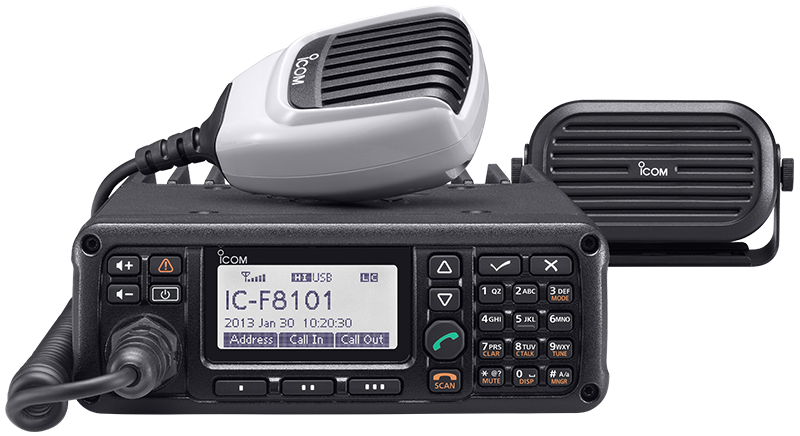
|
|
|
|
29 November 2017
|
Overview
The IC-F8101-3X does not provide sufficient parameter descriptions to arrive at a radio configuration
that provides optimized Automatic Link Establishment (ALE) performance. Further, many of the recommended
or default parameter values do not provide the level of performance that the IC-F8101 is capable of
achieving.
This article was constructed with input from Icom, and United States Army NETCOM, in order to provide
additional guidance in configuring the IC-F8101 for ALE operations. Application of the recommendations
in this document will result in maximizing performance of the ALE capabilities of the IC-F8101.
About The Automatic Link Establishment Datalink Layer
The goal of configuring the IC-F8101 is to establish reliable operation within each
of the three primary ALE states, and reliable transitions between ALE states.
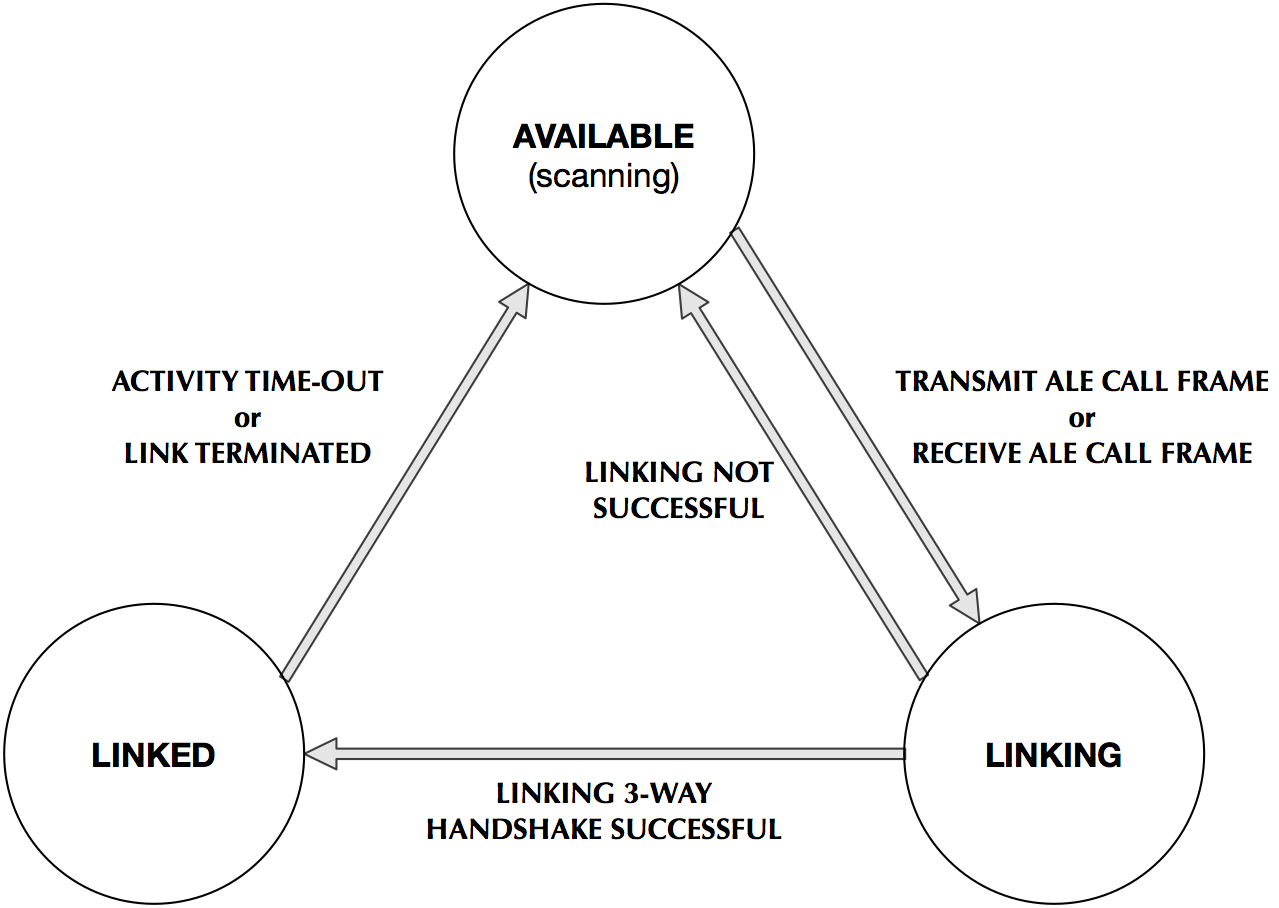
ALE
achieves a high level of reliability by implementing Forward Error Correction (FEC) in
conjunction with the transmission of triple redundant data, and majority voting on
received triple redundant data. The adjustments that are available in the IC-F8101
reside within Word Sync, Pattern Sync and the FEC sublayers within the Datalink Layer.
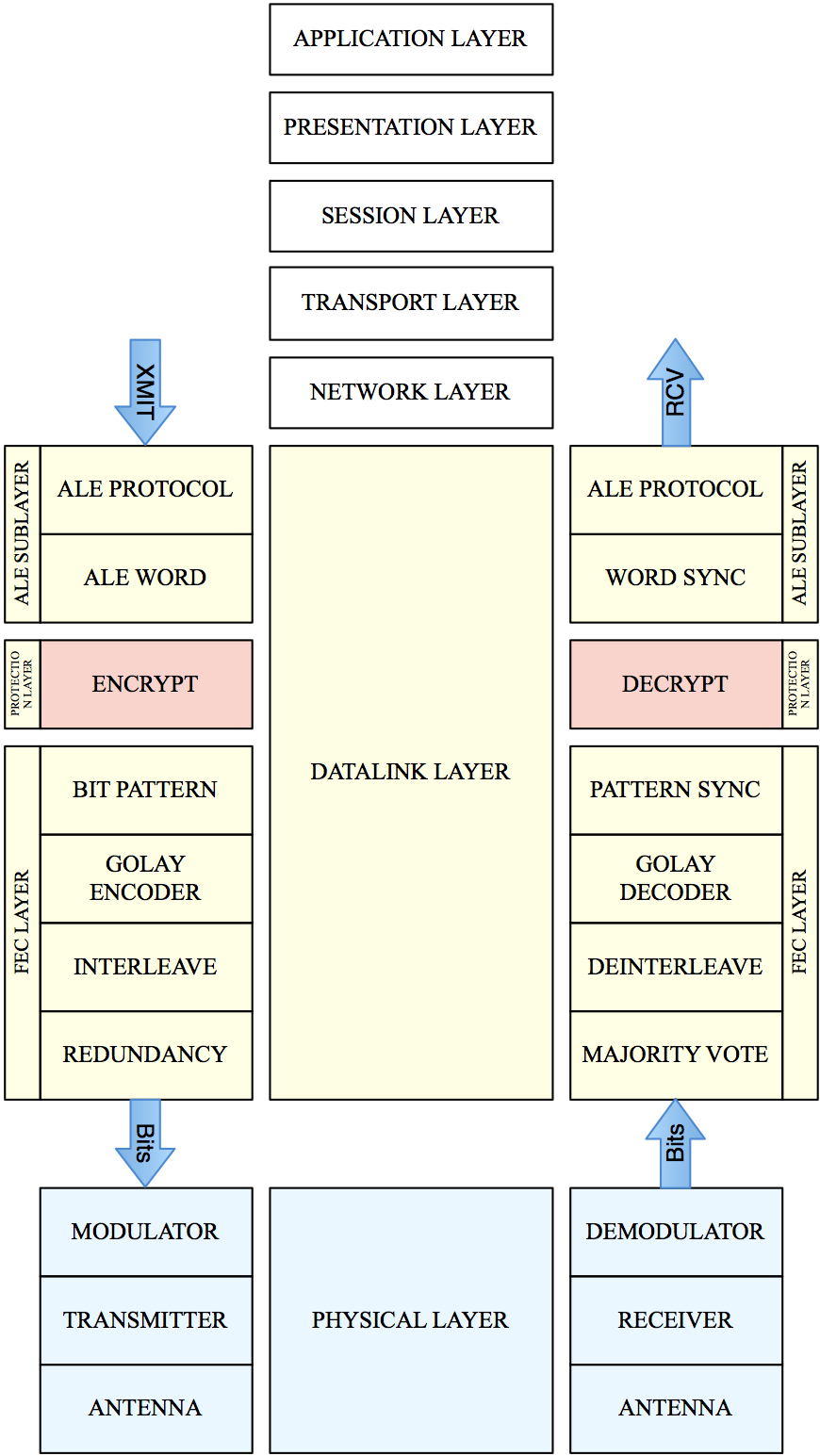
During transmit, the FEC sublayer of the Datalink layer is provided a 24-bit ALE data word, which
is formatted by the ALE Protocol, and performs the following actions upon the ALE data word:
-
Divide the 24-bit ALE data word into two 12-bit words.
-
Translate each 12-bit data word into a 12-bit Golay Forward Error Correction word.
-
Concatenate the 12-bit Golay Forward Error Correction word to the 12-bit data word,
constructing a 24-bit FEC word.
-
Interleaves the two 24-bit FEC words, creating a 48-bit data word.
-
Concatenate a zero value bit to the 48-bit data word
-
Concatenate a zero value bit to the 48-bit data word, resulting in a 49-bit transmission word.
-
The 49-bit data word is transmitted in triplicate.
These transmit operations are illustrated in the figure below.
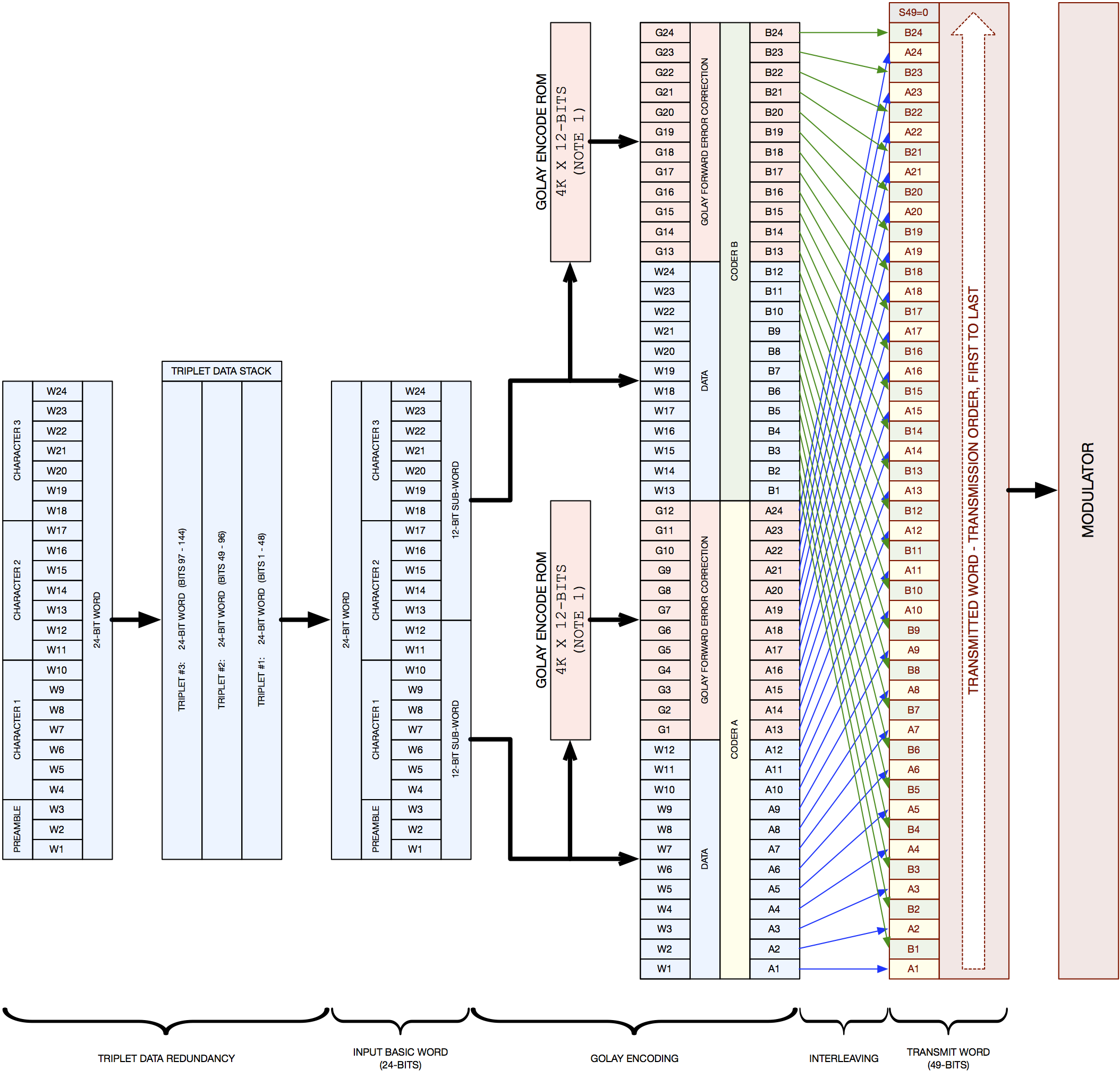
During reception, the FEC sublayer of the Datalink layer is provided a 48-bit data word,
which has to be processed to produce the original 24-bit ALE protocol word. The following
actions are performed by the FEC sublayer of the Datalink layer to reproduce the original
24-bit ALE protocol word:
-
Remove the zero stuffed 49th data bit.
-
De-interleave the 48-bit data word into two 24-bit Golay Forward Error Correction data words.
-
Apply Golay Forward Error Correction to each of the 24-bit FEC data words to
produce two corrected 12-bit data words.
-
Recompose the two 12-bit data words into a 24-bit ALE data word.
-
Save the data into a buffer of three data-lanes, one for each of the individual transmissions
that comprises the triple data redundancy.
-
After the reception of the last of the three transissions that make up the triple
redundancy, perform a majority vote on each the the three data lanes to produce the
final result for the 12-bit ALE data word.
These receive operations are illustrated in the following figure.
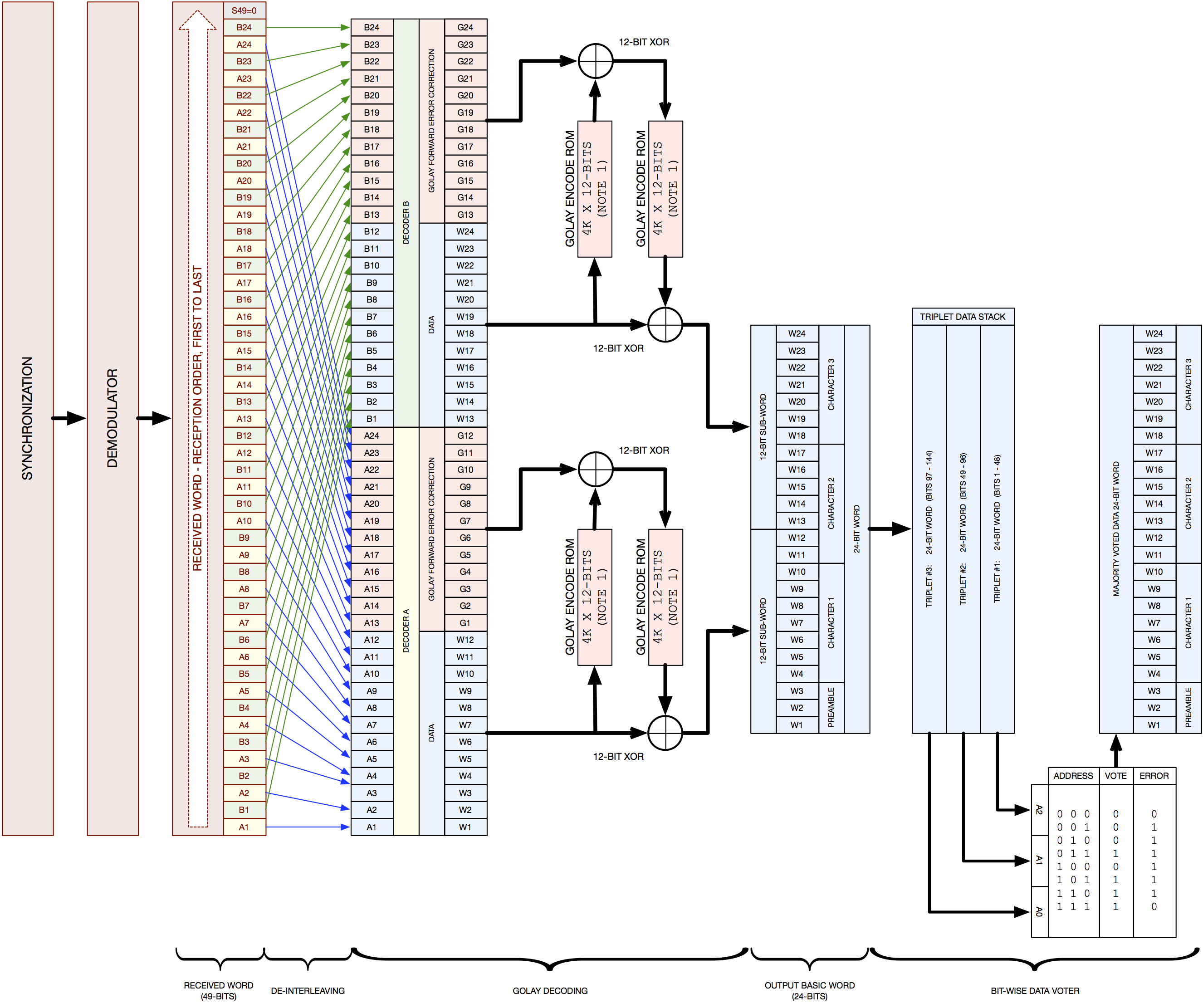
The Icom IC-F8101-3X customer programming software provides adjustments to the handling of errors
within the Datalink layer. Errors are detected in the recovery of the 48-bit data word (i.e.
in the synchronization / demodulator stages), and within the Golay FEC stages. The locations where
error detection occurs are illustrated by the dashed red-line shapes in the following image.
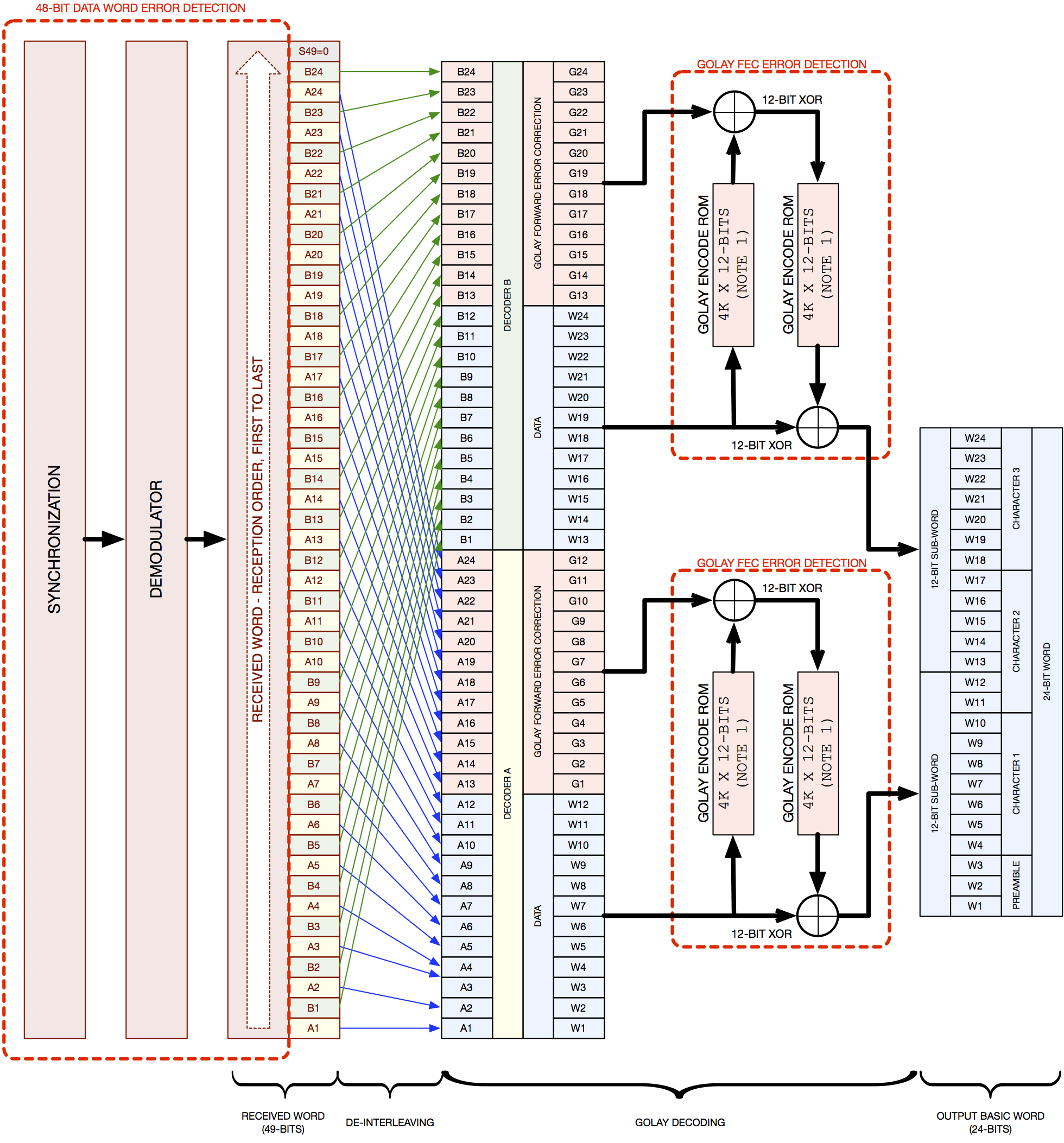
Configuration for Optimized ALE Performance
The following image shows the ALE configuration subsection of the Setmode section
of the customer programming software.
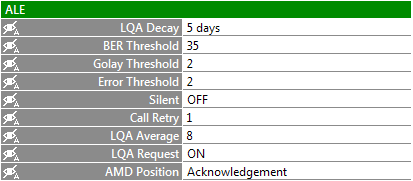
Select parameters within the ALE settings should be configured as follows:
-
The Bit Error Rate Threshold, labeled BER Threshold, controls a threshold for the maximum number of
error bits that will be accepted at the Synchronization / Demodulator stages in the Datalink layer. The
BER Threshold should be set to a value of 34 or 35.
-
The Golay Threshold controls a threshold for the maximum number of erroneous bits that will
be accepted as a result of Golay error bit detection. This parameter should be set to a value of 2.
A value of 2 is the maximum number of bits that can be corrected by the Golay Forward Error Correction
within the Data Link Layer. The Golay Forward Error Correction is capable of correcting up to 2-bits
of a 12-bit data word, and is capable of detecting up to erroneous 4-bits. The Bit Error Ratio (BER)
Threshold in the Icom IC-F8101-3X should not be set to the maximum number of correctable bits.
-
The Error Threshold controls a threshold of the maximum number of erroneous bits, which is the
sum of error bits from the Synchronization / Demodulation stage plus the error bits detected at the
GOLAY FEC stage, that should be accepted. A higher total error count than this threshold will result
in cancelling communications. The value of this parameter should be set to a value of 0 or 2.
-
The AMD Position should be set to Acknowledgement, which places the AMD
message transmission into the acknowledgement phase of the transmission, where the handshake
between the stations has been completed, and where message delivery is more likely to be
guaranteed.
Select parameters within the Call settings should be configured as follows:

-
The Auto Start Type should be set to a value of Scan.
-
The Auto Start Wait Time should be set to a value that allows for unattended station
operation to receive a call, and possibly transact a digital transmission while using a
mode other than ALE AMD, and then return to scan so that other subsequent calls can be
received. This is necessary as the IC-F8101 has been observed to sometimes not return to
scan mode when the ALE LINK is terminated by another station, and when this occurs, other
stations will not be able to complete an ALE call to your station until your radio is placed
back into scan mode (e.g. either manual or timer entry into scan mode).
NOTE: The disadvantage of having the radio auto-start the scan process is that manually stopping
the scan and selecting a pre-programmed channel, as may occur during NET operations, will see the
radio resume ALE scanning after the timer times out if no other activity occurs to cancel the
timer (i.e. no PTT, etc.). For this reason, it is recommended that for NET operations, the NETWORK
Scan Type be set to (none), and then be restored to Call after NET operations
have been completed.
To set the Scan Type to (none):
-
Enable MGR login
-
Press the X button to access the menu.
-
Use the Up/Down arrow buttons to navigate to Network and press the check-mark button.
-
Scroll to the network that has the call type set to Call and press the check-mark button.
-
Scroll to Scan Type: and press and hold the check-mark button for more than 1-second.
-
Scroll to Call and press the check-mark button to un-check Call.
-
Press and hold the check-mark button for more than 1-second to store the new setting.
-
Press the X button three times to exit back to the normal operating display.
To restore network scanning, repeat the above steps while replacing step 6 to scroll to Call and
press the check-mark button to check Call.
For all other Setmode parameters, Icom's recommended or default parameter values
should be acceptable.










